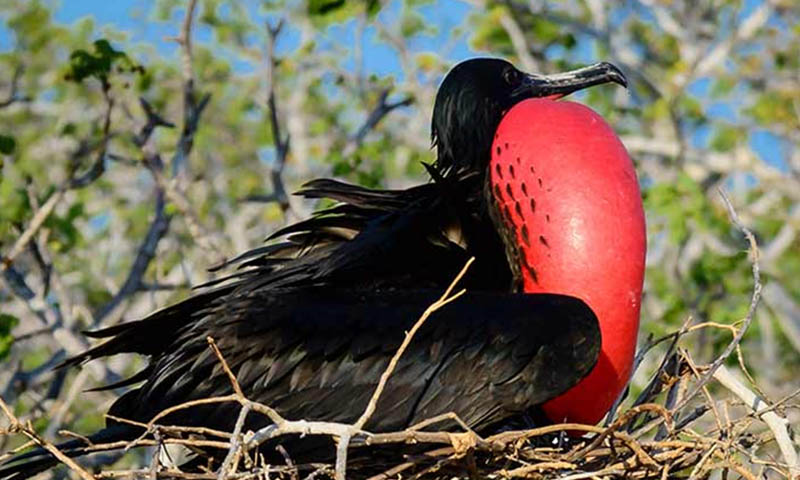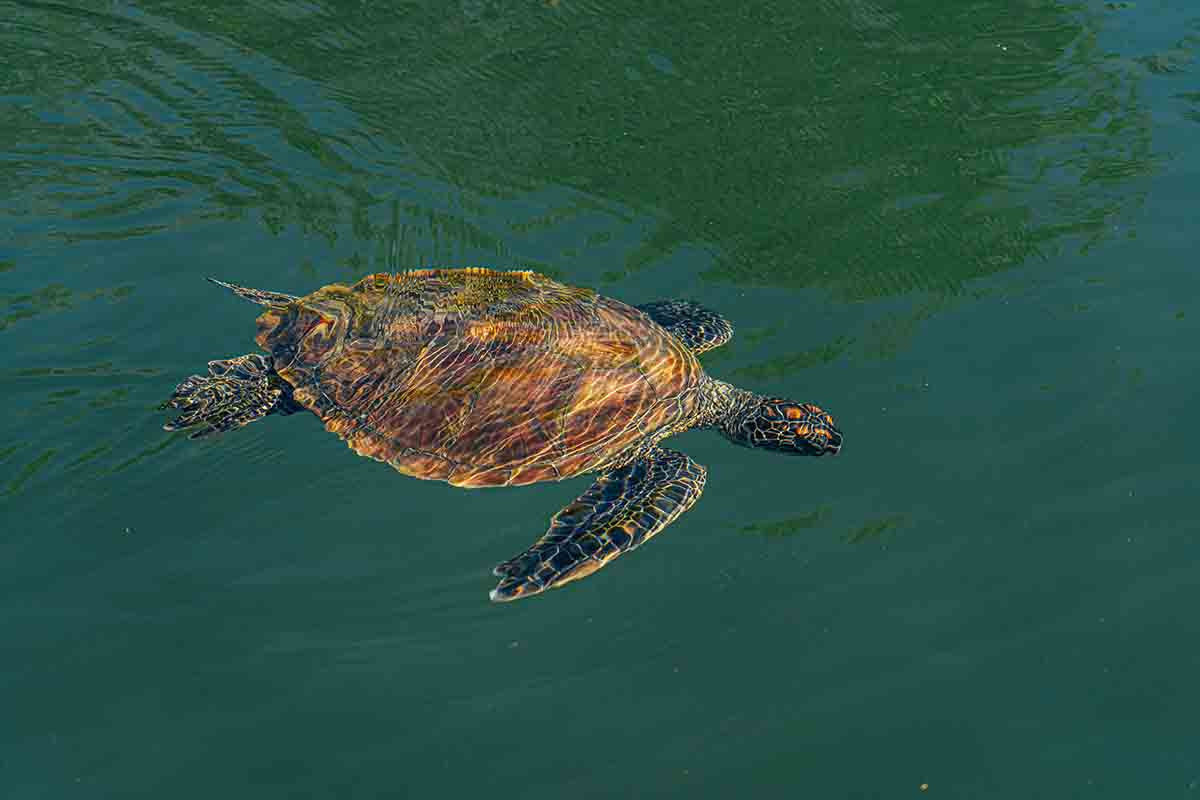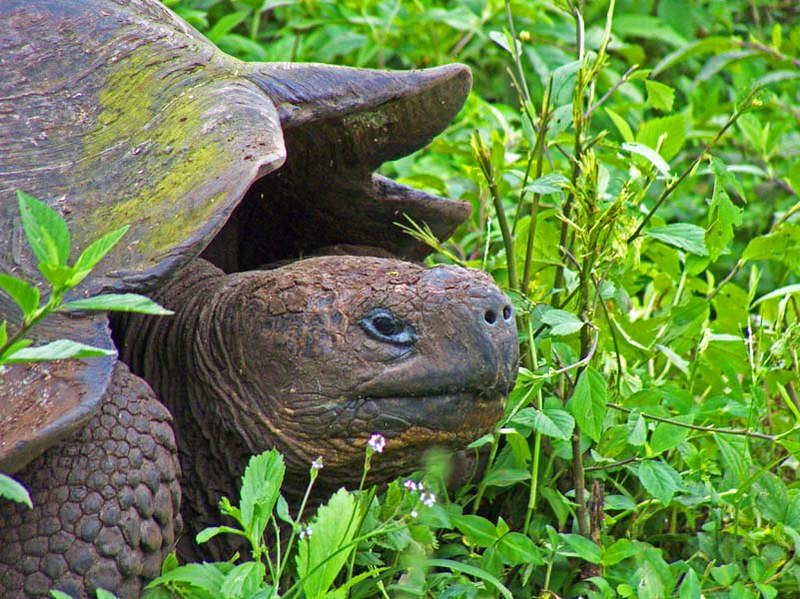This 5-day cruise offers a captivating exploration of the central and northern Galapagos Islands, visiting iconic locations like North Seymour, Genovesa, and Santa Fe. The tour highlights a rich diversity of wildlife, including red-footed boobies, land iguanas, and marine creatures such as sea lions and turtles. Enjoy activities such as snorkeling, hiking, and birdwatching while surrounded by breathtaking volcanic landscapes.
- Birdwatching with various species, including red-footed boobies, masked boobies, and more.
- Breeding and care of giant tortoises in captivity, promoting conservation and tourism.
- Stunning landscapes, volcanic cones, lava fields, and Galapagos penguins.
- Airport assistance (Quito or Guayaquil, if flights are booked through LT)
- Transfers in Galapagos
- Accommodation on board in double cabin
- All meals during the cruise
- Naturalist Bilingual Guide level III
- All visits and excursions according to the itinerary
- Snorkel Gear(mask, tube and fins)
- Kayaks
- Unlimited purified water, coffee and tea
- Round trip flight to/from Galapagos
- Galapagos National Park Entrance fee USD 200 p/p
- Galapagos Ingala card USD 20 p/p
- Tips
- Local Taxes
- Travel Insurance
- Meals and services not mentioned above
- Alcoholic drinks and soft drinks
- Extras and personal expenses
Itinerary
Day 1 (Thursday) : Bartolome Island
AM: Flight to Galapagos
Welcome to the Galapagos Islands
Your journey begins with a flight to this remarkable archipelago. Upon arrival, our VIP representatives will assist you with all entry formalities, including the migration card ($20) and National Park fee $200 for adults (as of September 2024) and Children $100 (under 12 years old). After a brief biosecurity clearance, your personal naturalist guide will greet you and escort you to our private transport.
While our crew handles your luggage, you’ll be transferred to the Seaman Journey via our comfortable tender boat, known locally as a “panga.” This short scenic ride delivers you directly to your boutique yacht, where our crew awaits with refreshments to welcome you aboard. We’ve arranged every detail to ensure your arrival is seamless and comfortable, allowing you to begin your Galapagos adventure in style.
PM: Bartolome Island
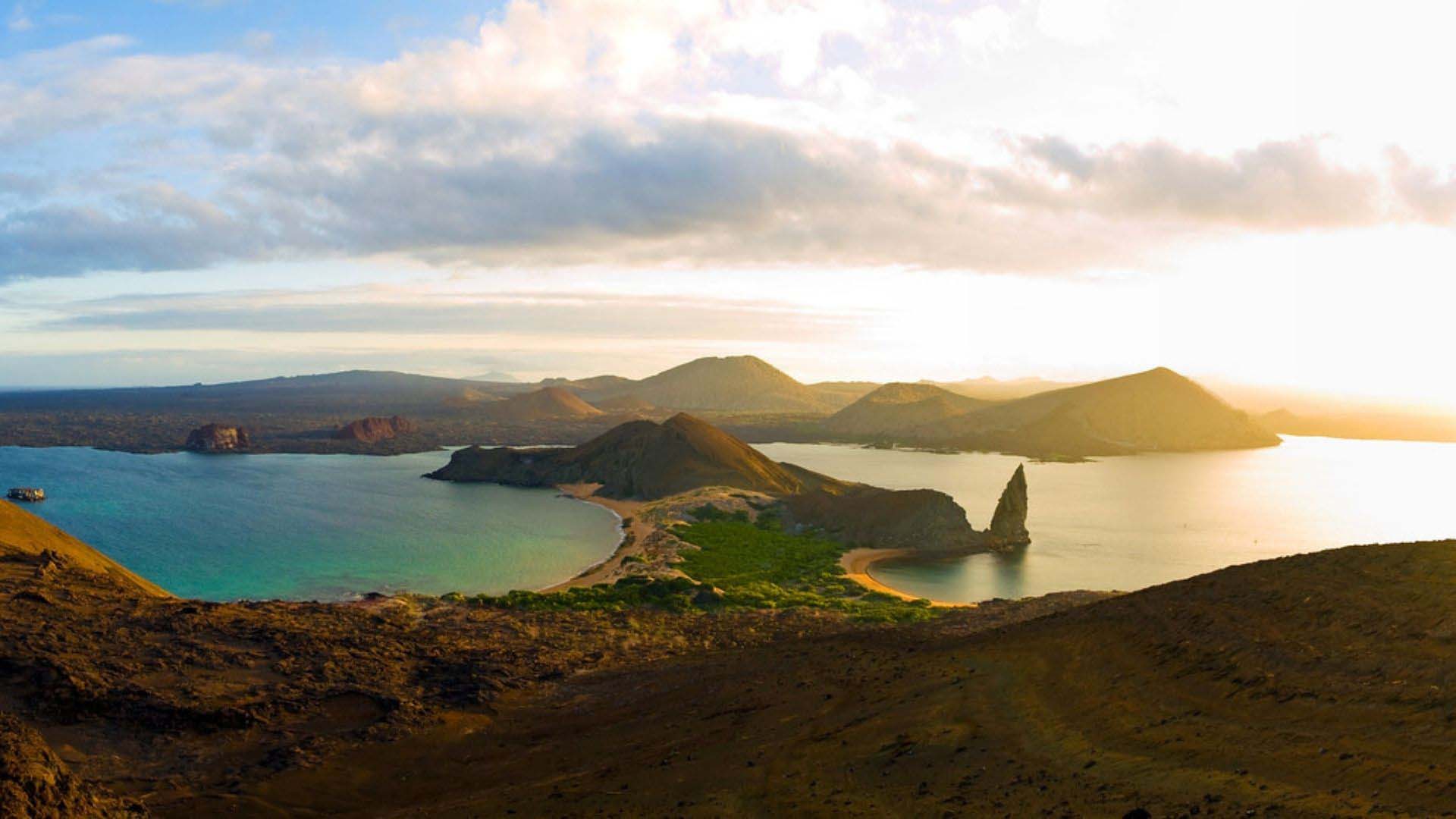
© Latin Trails
Bartolome Island is situated across Sullivan Bay. It has an altitude of 114 meters (aprox 375 feet), from where we can observe one of the most beautiful sceneries of the Galapagos Islands featuring Volcanic cones, lunar-like craters, lava fields, and the famous Toba-formed pinnacle eroded by the sea. There is very little vegetation on this island.
It has two breathtaking beaches where marine turtles can be spotted alongside sea lions and at the base of the pinnacle, there is a tiny colony of Galapagos penguins.
Day 2 (Friday) : Mosquera Islet & North Seymour Island
AM: Mosquera Islet
Located between North Seymour and Baltra, Mosquera Islet is one of the smallest islands in the Galápagos. It is of volcanic origin, formed by geological uplift, has no visible crater, and its terrain is very flat.
One of the most striking features of Mosquera is the contrast of colors. A beautiful beach of white sand, transparent turquoise waters, lush green vegetation, and jet-black lava rocks. Landscape photography is highly recommended here, especially in the golden light conditions of early morning or at sunset.
PM: North Seymour
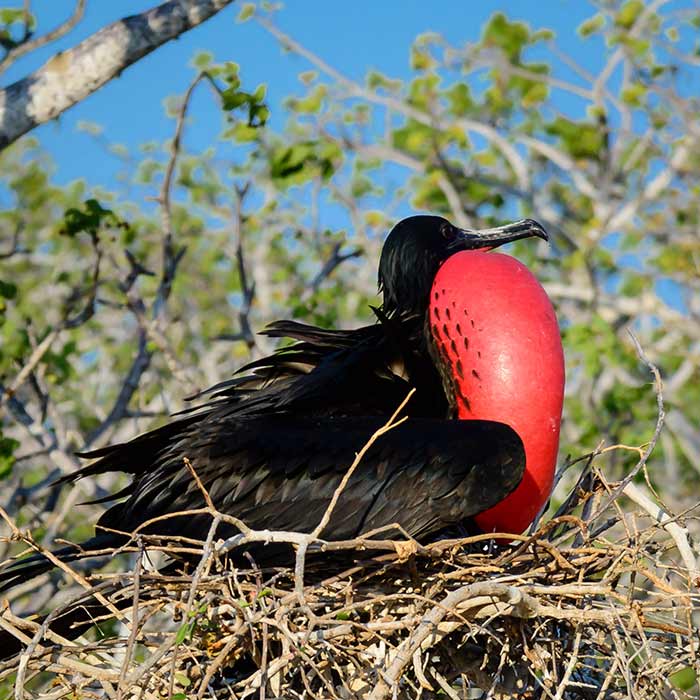
North Seymour: A Wildlife Sanctuary
This remarkable elevated island offers an easy, level walking experience across a pristine landscape. Here, nature provides an intimate theater of Galapagos wildlife. Watch magnificent frigatebirds nesting among the low shrubs, their males displaying their brilliant red throat pouches, while charming blue-footed boobies perform their delightful courtship dances a few feet from the trail.
Along the shoreline, playful sea lions ride the waves, while elegant swallow-tailed gulls perch gracefully on the cliffs. Our expert guides will lead you along well-maintained paths, ensuring comfortable viewing of these fascinating creatures in their natural habitat.
Your visit can be as active or relaxed as you prefer, with ample opportunities to observe and photograph from convenient resting spots.
Breakfast / Lunch / Dinner
Day 3 (Saturday) : Genovesa Island: El Barranco & Darwin Bay
AM: Genovesa Island, El Barranco – The Cliff
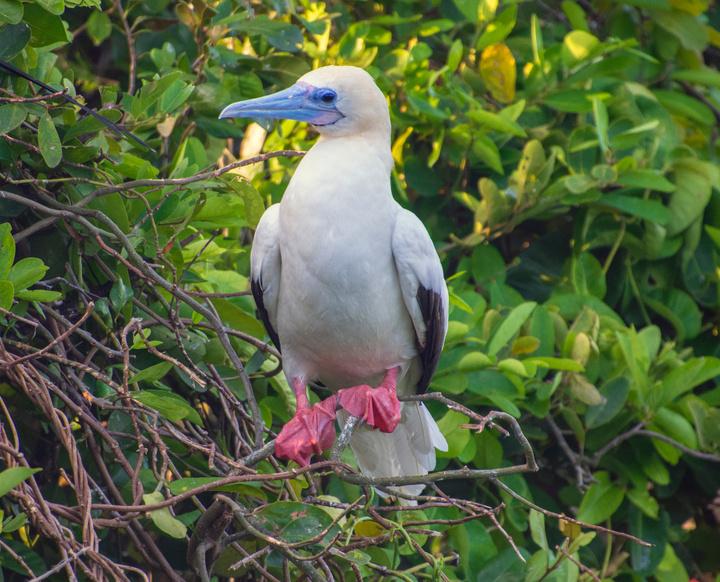
Photo: CampPhoto
El Barranco offers an enchanting morning exploration along Darwin Bay’s southern edge. This 1.5 km trail traverses volcanic terrain and typically requires two hours at a leisurely pace. The path reveals one of Genovesa’s most remarkable bird sanctuaries, where red-footed and masked boobies nest in close proximity.
In the cliff’s natural cavities, observe fascinating storm petrels and their primary predator, the short-eared owl. The dramatic coastline can be admired both from the trail and during a comfortable panga ride, where you might spot fur sea lions resting on the rocks.
Note: This is one of only five locations in the archipelago where the red-footed booby nests, making it a particularly special destination for wildlife enthusiasts.
PM: Darwin Bay
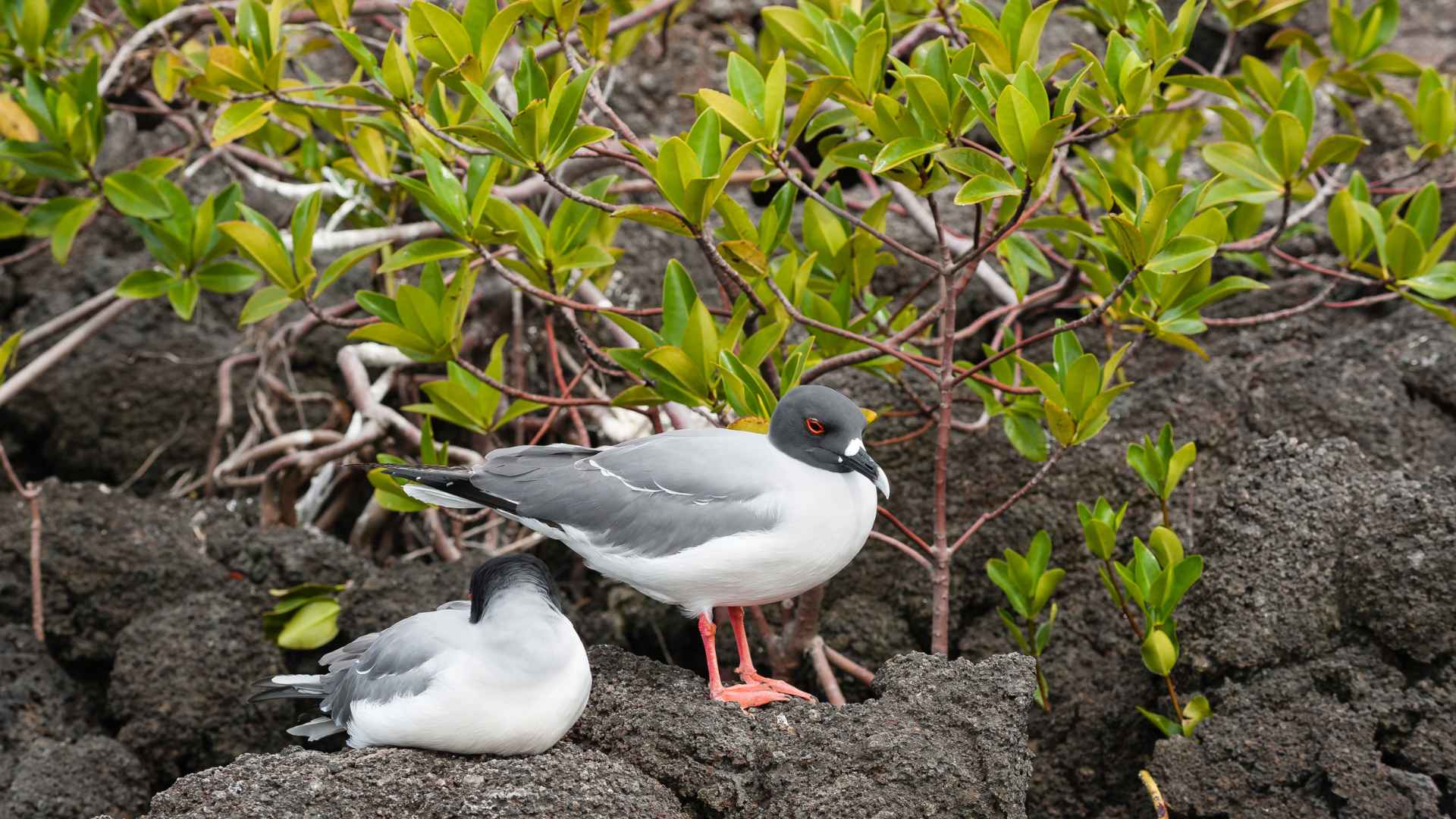
Photo: Boydhendrikse
This bay originated when the crater of this island collapsed below sea level. The wet landing is on a beautiful white coral sandy beach. This island is a favorite destination for birdwatchers, allowing the observation of several species including: red-footed boobies, masked boobies, wandering tattlers, lava gulls, whimbrels, yellow-crowned and black-crowned lava herons, and yellow warblers.
Continuing on the trail, visitors can see Red-Foots nesting in the Mangrove trees below. Birdwatching opportunities include sightings of sharp-beaked finches, large cactus and ground finches, Galapagos doves, and swallow-tailed gulls. Alongside the trail, there are tidal pools, here you can observe coastal and sea birds like night herons as well playful sea lions. It is also a very good snorkeling spot to encounter marine life like small reef-trip sharks, sea turtles and hundreds of colorful fish. Sea Kayaking is also possible.
Breakfast / Lunch / Dinner
Day 4 (Sunday) : South Plazas Island & Santa Fe Island
AM: Plazas, Santa Cruz
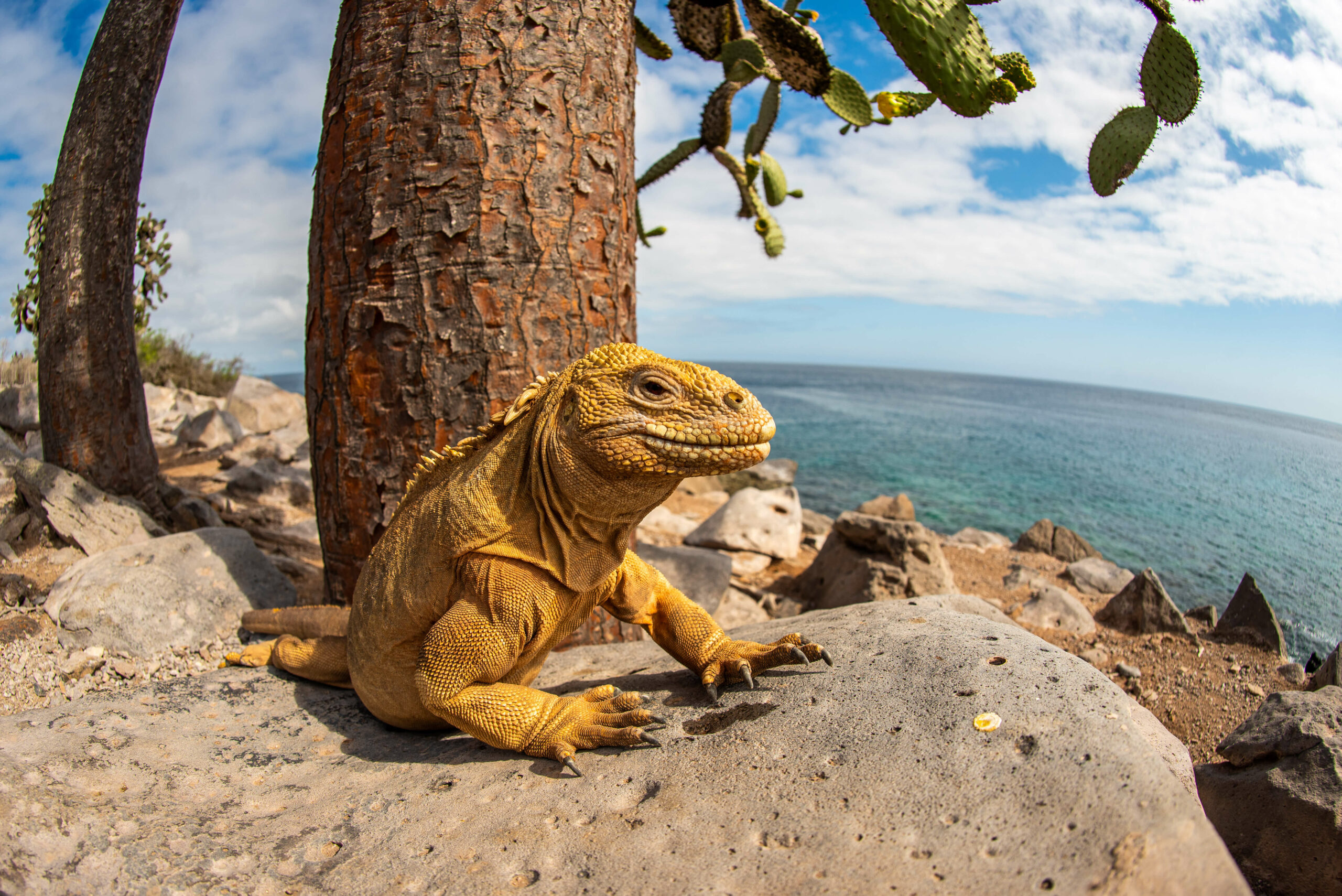
© Latin Trails
South Plazas is located to the east of Santa Cruz Island and forms part of two islands known as Islas Plazas. Despite its small size, some of the most interesting and outstanding species of the Galapagos are found here. The Plazas land iguanas are smaller than their relatives found on other islands.
Throughout the island, there are several hybrid iguanas, a result of crossing a male marine iguana and a female land iguana. They are unique, recognisable at first glance by their black/gray colour, with a land iguana’s crest, but face and tail of the marine iguana. The large population of iguanas is due to the presence of tunas, their favourite food. Swallow-tailed gulls nesting in the rugged cliffs are seen along with other seabirds such as Audubon shearwaters, red-billed tropicbirds, frigate birds, and brown pelicans.
PM: Santa Fe

© Latin Trails
Located in the southeastern part of the Galapagos, this island was formed from an uplift instead of a volcanic origin, which is why it is mostly flat. There are some theories which suggest this could be the oldest island in the Archipelago. Santa Fe is home to a number of endemic species like the Galapagos hawk, Galapagos snake, Galapagos mockingbird, rice rats, and one of the two species of land iguanas on the islands.
After disembarking in the beautiful and clear waters, you will be in proximity with one of the many sea lion colonies. Along the trail, many salt bushes can be seen as well as giant prickly pear cacti: gigantism is a characteristic of oceanic islands. There are great possibilities for snorkelling with playful sea lions and tropical fish.
Breakfast / Lunch / Dinner
Day 5 (Monday) : David Rodriguez Land Tortoise Breeding Centre
AM: David Rodriguez Land Tortoise Breeding Centre

© Latin Trails
Your final morning in the Galapagos features a visit to the prestigious David Rodriguez Tortoise Center, a conservation jewel dedicated to protecting San Cristóbal’s native giant tortoises. Named after a devoted park ranger who served these islands for 39 years, this sophisticated breeding facility plays a crucial role in preserving these magnificent creatures.
Located in a serene setting near Cerro Colorado, the center is a 40-minute scenic drive from port through the island’s highlands. Here, you’ll witness the remarkable Chelonoides chathamensis tortoises in a carefully designed natural habitat. The facility, established in 2002 and refined over the years, represents the pinnacle of conservation excellence in the Galapagos.
Following this memorable encounter, our staff will ensure a seamless transfer to San Cristóbal airport for your departure flight.


